AMMO – How to paint miniatures for Wargames
AMMO by Mig Jimenez is a Spanish company that produces paints and painting accessories, or ammunition for modelling as they describe it themself. Their main focus is model building, mostly historical topics and in this area, it is very common to have resource books that cover certain time frames, conflicts, specific forces or vehicles.
For some of my projects, for example Bolt Action, I do own various resource books that cover paint tables, drawings and pictures of vehicles and so on. In fictional context, you mostly have the army books or rule books of the games that you play to choose from. And some other books cover techniques like airbrushing etc., and this book - How to Paint Miniatures for Wargames - covers exactly this, how to paint miniatures for tabletop wargaming.
This book is available as a 168 pages, full-coloured softcover in English, Spanish and French for 34,95 EUR. AMMO combined the works of multiple authors in this book, to cover different areas and techniques (as well as level of expertise). How to Paint Miniatures for Wargames combines the works of
- Rubén Torregrosa (aka “HeresyBrush”)
- Giuseppe Chiafele (Axia Painting)
- Iván Sanz de Castro
- George Hatzopoulos
- David Imrie (SaxonDog)
- Omar Olabi
The book is structured into 6 chapters, beginning with the introductions, tool box, preparation of the miniatures, painting techniques, bases and masterclasses, as you can see from the picture below. Among the tools recommended, you will find products that Ammo offers themself, but other third-party components as well. With these first steps, it is similar to what some of you may know from the early 'Eavy Metal painting guides published by Citadel in the mid-90s, but of course in an updated way.
The initial chapters create a foundation for the following techniques. For example, something that can be done in various stages of thoroughness - the preparation of the miniatures. Most people probably primarily care about removing mould lines (and this is already something that be done in various levels, with just removing the line itself, to gap filling, sanding course areas etc.), but among model kit builders and those who work with resin, scrubbing down the miniatures in soap water is very common and highly recommended (along with removing dust or scraps of plastic, metal etc. residue after larger conversions).
The fourth chapter - covering painting techniques covers colour theory and this is something, that is important to understand. Especially if you're painting something that you created for your own, like your own coat of arms for a fantasy kingdom or sci-fi legion. The colours (not paints at this point) chosen have to work with each other, build contrast, create a fitting effect at certain distances (a lot of wargamers care more about the look at an arm's length than close up for example), and this moves further into how to properly darken or lighten your colours and not just adding black or white, along with how to thin your paints regarding the intended use.
All these information and steps are backed up with pictures and illustrations to make it more comprehensible, what is meant. And of course, put into perspective, if speed or skill is more of importance for you, along with balanced mid-steps. Basic techniques are explained, with base painting / colour blocking, the use of washes, dry brushing and glazing. First initially and then later on in more detail and even explained the usage across different scales (something that is often a bit lacking, as the main focus is obviously 28mm heroic-ish in most publications). I have worked so far with acrylic and oil paints, so I found the explanation of enamel paints / washes on a Space Marine interesting, and one of the techniques I often use my self is the Triad System, where you choose a for each area a base colour, along with a shadow and highlight to work with. You can of course combine this with washes or dry brushing or add additional steps (for example keep it triad for regular rank & file and add mid-steps for characters). The Triad system from my point of view works especially well with smaller scales and / or miniatures, that don't take are difficult to dry brush (maybe because you don't like the dusty or grimy finish) or washes (larger flat / open areas are tricky to wash, as you have to avoid pooling or dirty edges).
The more elaborated techniques based upon the Triad, for example using 5 or more levels is called Layering (Which is explained in the book as well (mid picture below), and if you want to create a smooth transition between each step / layer, you can choose to try Wet blending which is explained as well. This chapter is concluded by two additional sub chapters, covering different kinds of weathering (from simple mud stains on the trousers and boots, up to battle worn chipping) and to simple and intermediate base decorations, with sand or texture pastes.
The largest part of this book is chapter 6, with the Masterclasses, where the different techniques are applied on different scales and projects. The artists mentioned above show their various fictional and historical army projects and explain, how they achieved the different results.
Rubén Torregrosa (aka “HeresyBrush”) has two sub chapters here, covering "fast painted" 15mm Afrikakorps (Fast painted to be honest compared what you could do, but of course with a higher level than just triad or base colours with a quick wash and dry brush, which creates a decent result on that scale as well), but it is impressive to see with what little additional effort you can really make those miniatures pop. His second master class is covering 15mm 16th century Spanish tercios, which a cleaner, smoother paint transition compared to his world war 2 project. Along with showing us the application of banners to miniatures, which is helpful as there are many epochs or settings, that will make use of that.
David Imrie (SaxonDog), of whom I've seen lots and lots of historical miniatures, especially dark age and medieval troops, shows a fast-painting project of the American Civil War, using 28mm miniatures by the Perrys. Interesting choice, as I can relate, that you need something that creates process if you're going for dozens - if not hundreds - of miniatures in different shades of blue. Including manageable techniques for weathering, to show battle proven regiments of the civil war.
Omar Olabi covers different Droid Infantry from Star Wars Legion, with the use of spray paints / air brush. Here comes zenithal priming to use, creating shadows / highlights from the very early stages. As the miniatures are mostly mono-coloured this is a good technique to make them look less flat.
Ivan Sanz de Castro shows different levels of detail / work intensive techniques on his Rohan army project. This is interesting, as he combines the different levels of intensity on a single miniature, not just between rank & file and heroes. So, for example, areas that will be more prominent receive more attention. An additional value on this project is the how-to on painting different horses. I like the rather clean look of his painting style, as this goes towards the Games Workshop 'Eavy Metal way of painting their own Lord of the Rings / Middle Earth range.
A more elaborate Masterclass comes by George Hatzopoulos. Detailed painting of medieval command bases. Something that I would have seen with David Imrie as well, but it is always interesting to see new input on here. George shows how to make the faces pop (or the little bit of flesh you see inside that helmet) and of course, the colourful coats of arms and tabards of knights. The details, the hand painted banners, freehands on both tabard and barding, incredibly impressive and nice to see in a step-by-step guide (something to be honest, that works in print so much better as on video)
The last masterclass covers a Death Guard character in 32mm heroic scale, painted by Giuseppe Chiafele of Axia Painting, on an impressive studio level. If you're coming from Warhammer, this might not be as "impressive" at first sight (this is no devaluation of his work, it is impressive), as it is pretty close to newer 'Eavy Metal and you've seen this with a lot of quality content creators like for example Stahly or Darren Latham, but if you're new to this or moving/expanding from historical wargaming, this overdrawn, "cartoon-ish" can be hard to achieve or to understand. With that in mind, this a very solid and absolutely understandable addition to this book.
Each of the master classes is summed up with a gallery of the painted miniatures of each painter, adding further insight on their projects and impressive skills.
Conclusion
This book creates a very valued first impression. It is glossy, goes into detail, has lots and lots of painted miniatures from various manufacturers. Just for that, it is really interesting. The book itself features obviously the product range by Ammo Mig, but in a reasonable way and it feels less like a vendor lock-in compared to other, similar publications I've read so far. And especially as most of this is paints, and depending on your access to the Ammo range, you could very easily look up conversion charts etc. or transfer the techniques to the tools and paints you have access to.
One of the questions, I asked myself, especially in 2022 and with everything going digital. Do I need a book that? Is that still a valid or reasonable choice of media? With all the free content on blogs and social media it may not be that clear upfront. But a book is a book. It runs without power, it stays in your possession (unless you lend it) and it is there, on a plane, on the train and on vacation, without the need of WIFI or something similar. I agree with you, when you say, there is similar content available online. But often enough behind a paywall, patreon etc. and especially with digital content, it is unclear how long you will have access to it (for example all the Masterclasses on Warhammer+ could be taken offline, replaced etc. once they make changes to their content or product lines), so a book provides a certain level of reliability that even offline content only can to a certain degree. From this point of view, producing a book is a valid choice. Maybe not for everyone, but still for a lot of people.
Beyond that. I think this is a beautiful product for someone who starts with the hobby. Whether you gift it to your niece or nephew, or your wargaming buddy who went down the rabbit hole after being introduced to miniature board games or something similar.
The reviewed product item was provided by the manufacturer. Thanks to Jamie Tranter / Infamous JT for sending me a review copy.
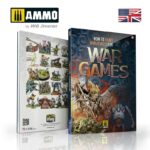
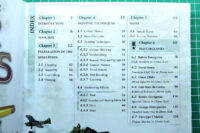
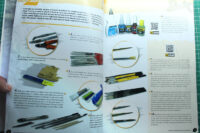
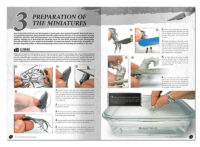
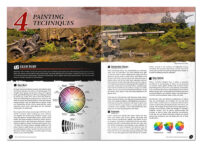
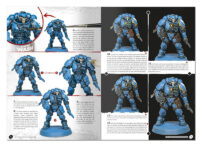
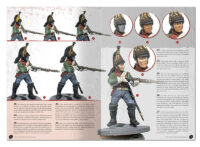
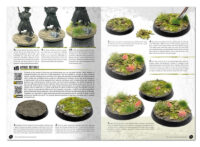
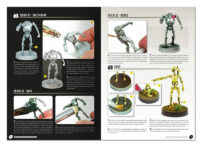
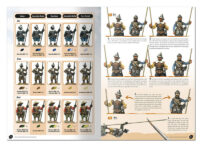
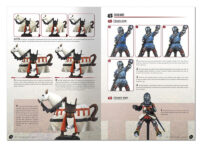
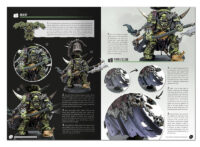
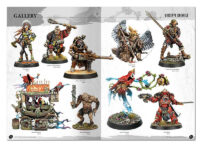












Leave a Reply